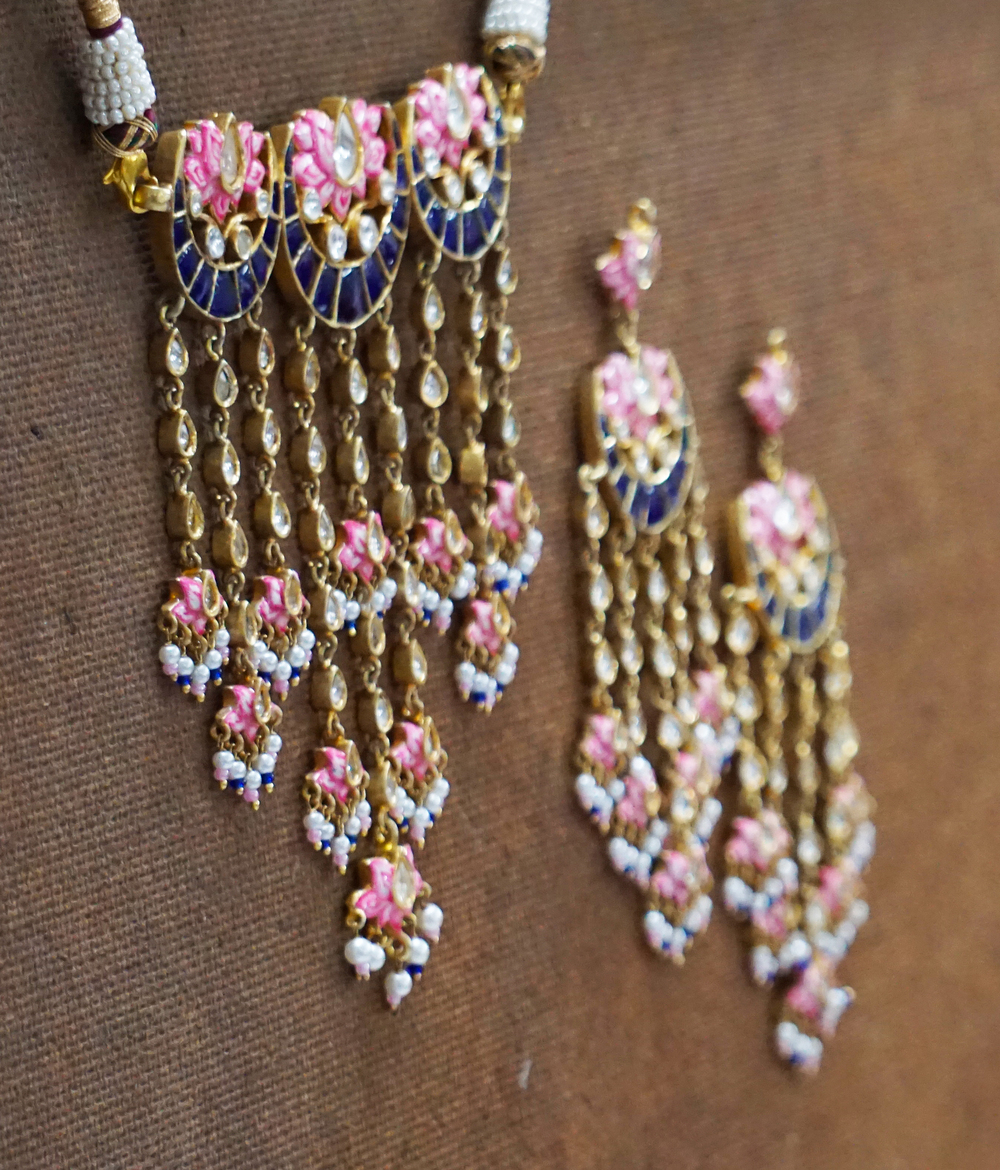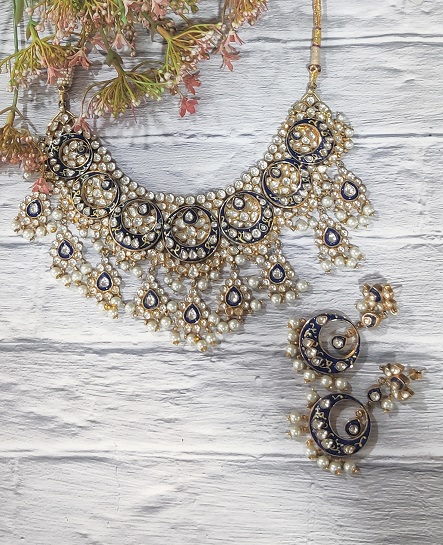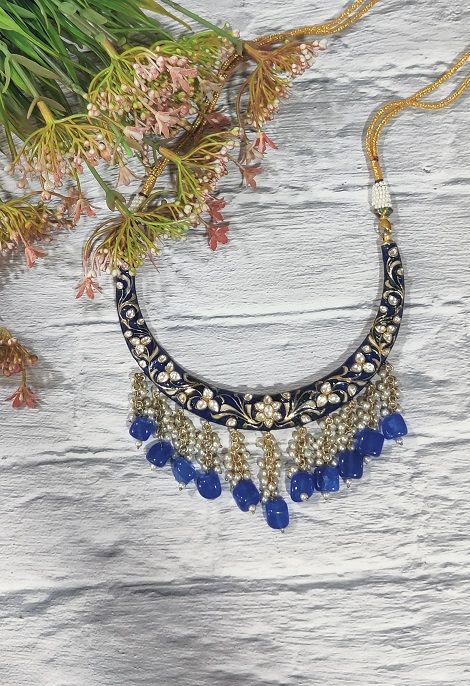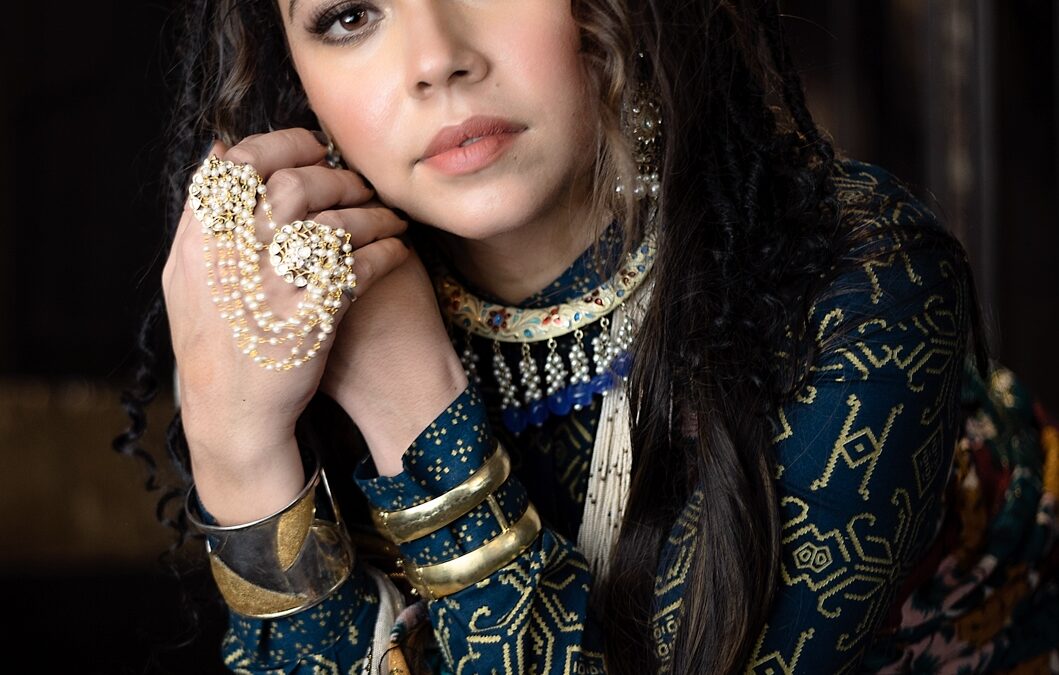Jewelry has always been an integral part of human culture, serving as symbols of status, adornment, and cultural identity. Among the myriad forms of jewelry, Meenakari Hasli necklaces stand out for their intricate designs, vibrant colors, and rich history. Originating from India, these necklaces have evolved over centuries, embodying the craftsmanship and cultural heritage of the region. In this blog, we embark on a journey to explore the fascinating history and evolution of Meenakari Hasli necklaces.
Historical Origins

The art of Meenakari, also known as enameling, has its roots deeply embedded in the rich cultural tapestry of India. Its origins can be traced back to the Mughal era, around the 16th century, when skilled artisans perfected the technique of fusing colorful enamel onto metal surfaces, particularly gold and silver. Initially, Meenakari was primarily used to adorn royal palaces, temples, and artifacts.
Evolution and Cultural Significance

Over time, Meenakari evolved from being solely reserved for architectural marvels to being incorporated into jewelry-making. The emergence of Meenakari Hasli necklaces marked a significant shift in its application, as artisans began crafting intricate necklaces adorned with enamel work, gemstones, and delicate filigree.
These necklaces hold immense cultural significance, often worn by brides during weddings and other auspicious occasions in Indian culture. The vibrant colors and intricate designs symbolize prosperity, good fortune, and marital bliss. Each piece is meticulously crafted, reflecting the artisan’s skill and attention to detail.
Techniques and Materials

Crafting a Meenakari Hasli necklace is a labor-intensive process that requires expertise and precision. Artisans start by shaping the base metal, typically gold or silver, into the desired necklace design. Intricate patterns are then etched onto the surface using specialized tools.
The next step involves applying the enamel, which is made by mixing powdered glass with metallic oxides to achieve vibrant colors. The enamel is carefully applied to the engraved patterns and fired in a kiln at high temperatures to fuse it onto the metal surface. This process is repeated multiple times to achieve the desired depth and intensity of colors.
Once the enamel work is complete, gemstones, beads, and filigree elements are added to enhance the necklace’s beauty and elegance. The final piece undergoes polishing and finishing touches before it is ready to be adorned.
Contemporary Trends

While traditional Meenakari Hasli necklaces continue to hold sway in Indian jewelry culture, contemporary artisans are also experimenting with modern designs and styles. Fusion of traditional Meenakari with contemporary elements such as geometric patterns, minimalist designs, and unconventional materials is gaining popularity among younger generations.
Moreover, Meenakari Hasli necklaces are not limited to Indian shores but have gained recognition and appreciation on the global stage. Fashion designers and enthusiasts worldwide are incorporating these exquisite necklaces into their collections, showcasing the timeless beauty and craftsmanship of Meenakari.
Conclusion
Meenakari Hasli necklaces are more than just pieces of jewelry; they are tangible expressions of India’s rich cultural heritage, artistic prowess, and timeless beauty. From their historical origins in the Mughal era to their contemporary adaptations, these necklaces continue to captivate hearts and minds with their intricate designs and vibrant colors. As we celebrate the legacy of Meenakari, let us cherish and preserve this exquisite art form for generations to come.

